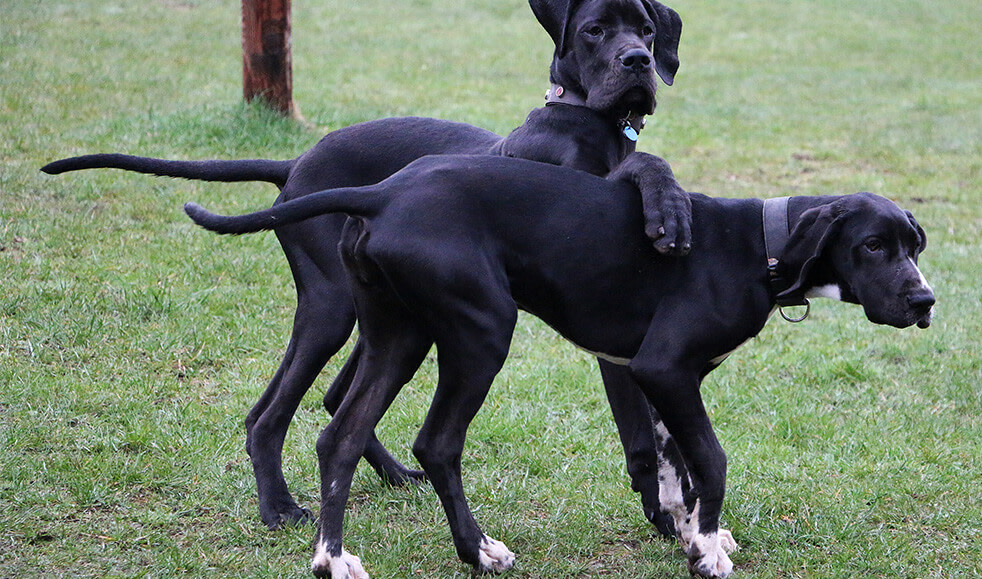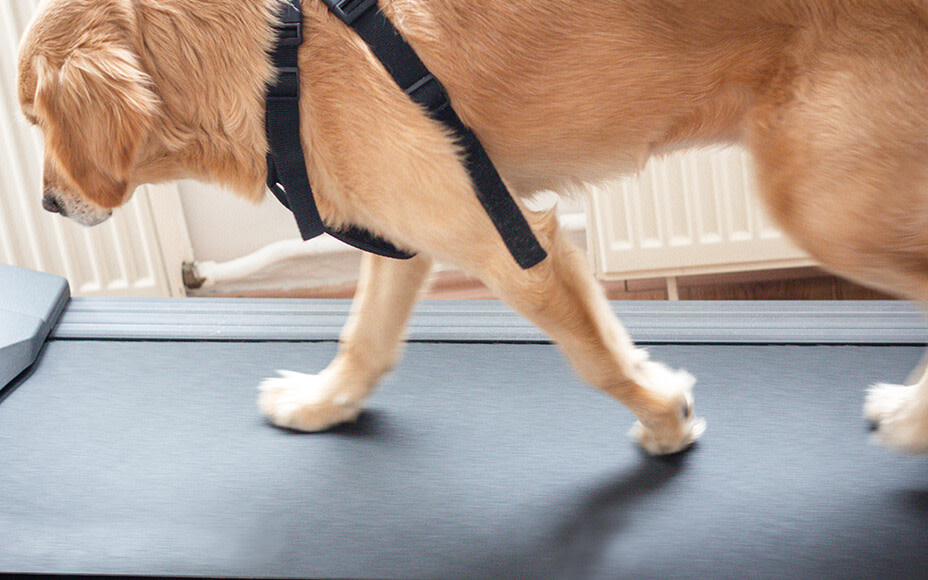What is osteoarthritis in dogs, how to recognize it, and how is it treated? Learn more about osteoarthritis in dogs.
Osteoarthritis in Dogs: Causes, Symptoms, and Treatment
Osteoarthritis (also known as Osteoarthrosis) is often associated with aging humans or animals. But what is osteoarthritis, and how does it manifest in dogs? Osteoarthritis affects the joint cartilage, occurring in various body parts such as elbows, shoulders, knees, spine, and hips. The disease progresses steadily, is degenerative (resulting from wear and tear), and chronic. Seniors, whose cartilage has endured a lot during their lifetime, are particularly affected. Learn here how the disease develops, its symptoms, and treatment options.
Cause: How Do Osteoarthritis Develop?
In healthy joints, bones are protected by cartilage, and the joint fluid prevents bones from touching during movement. When the cartilage is damaged due to factors like obesity, arthritis, or other misalignments and traumas, bones come into contact and rub against each other, leading to osteoarthritis in dogs. Damage to the cruciate ligament, as well as a pre-existing injury, is often the cause of osteoarthritis. Over time, the cartilage between the bones becomes brittle and can eventually tear. Besides bone wear and tear, deformities, redness, and swelling with pain are also consequences.
Particularly predisposed are large and very large dog breeds. However, dogs that are significantly overweight over an extended period also have a higher risk of developing osteoarthritis.

Symptoms: How to Recognize Osteoarthritis in Dogs
If your dog is suffering from osteoarthritis, it may manifest through the following symptoms:
- Lameness: Dogs with osteoarthritis often limp strongly, especially after a long period of rest. The lameness decreases after a short run, and the dogs “limber up.”
- Restricted mobility, especially near the joints
- Tension
- Muscle atrophy
- Pain
- Hardening of the joint capsule
- Ligaments and bones become visible at affected areas
Did you know that you can easily support your dog alongside veterinary therapy? A healthy diet is crucial when laying the foundation for a healthy life. At iHugDogs, we have made it our mission to bring healthy food to every bowl. With fresh meat, crisp fruits and vegetables, select herbs, and rich oils, we strive to create the best meal and provide a dog with a long and healthy life. Unhealthy additives like grains, sugar, and artificial colors and flavors are not found in our products.
Treatment Options for Osteoarthritis
If osteoarthritis is diagnosed through examinations such as X-rays, ultrasound, possible joint puncture, and palpation, various treatment options will be discussed at the veterinary clinic. The focus is on pain relief, regaining and maintaining mobility, and supporting joint function. The disease is initially treated conservatively without surgery to alleviate existing symptoms.
With our iHugDogs Wet Food VET Joint Fit, we cater to the needs of sick furry friends. Our Joint Fit feed supports the treatment with its special formula. The green-lipped mussel, a superfood with genuine superpowers, can be found in our feed: Its meat contains the glycosaminoglycans chondroitin and glucosamine, which can support cartilage metabolism and cartilage health. The green-lipped mussel is also a primary component of our Joint Tabs for dogs. As a bundle, you get a complete set right away.
Conservative therapy also includes potential weight reduction, regular but less intensive exercise, pain relievers and anti-inflammatories, and medications to protect the cartilage.

Physiotherapy for dogs? Absolutely! Although the idea of your furry friend gently moving its legs on its back might seem amusing, physiotherapy is an optimal support for improving symptoms. In addition to releasing tension, gentle mobilization and regaining mobility are achieved. Physiotherapy for dogs can include swimming, cold and heat therapy, ultrasound, and shockwave therapy.
After unsuccessful conservative therapy, further options such as radiation therapy, joint injection, and surgery are available. If osteoarthritis is left untreated, and lameness is attributed to old age, immobility can quickly occur. The consequence: dogs may die prematurely.
Prevention: What You Can Do to Protect Your Dog
Prevention is better than cure – and you can do a lot to reduce the risk of osteoarthritis. Prevention begins in puppyhood, as new dog parents often let their puppies roam freely. However, overloading in young age can be harmful to cartilage and bones, especially during growth. It should always be ensured that puppies do not climb stairs, do not jump, and do not walk for too long at a stretch. Adult dogs should be regularly exercised and kept fit with diverse activities. Whether sports, long walks, or other activities – exercise keeps dogs fit, and you shouldn’t refrain from letting your four-legged friend move due to fear of osteoarthritis. It’s all about age-appropriate movement.

If dogs are particularly large or a bit older, jumps are also taboo, as excessive strain carries the risk of osteoarthritis. Additionally, for large dog breeds, there is the issue of significant weight that their bones must bear. Weight plays a role at any age, as obesity is also considered a risk factor and should be avoided.
A balanced, healthy, and species-appropriate diet is a focus of prevention when it comes to osteoarthritis. Bones, cartilage, and tissue require specific doses of vitamins, trace elements, and minerals that can ensure their preservation.


